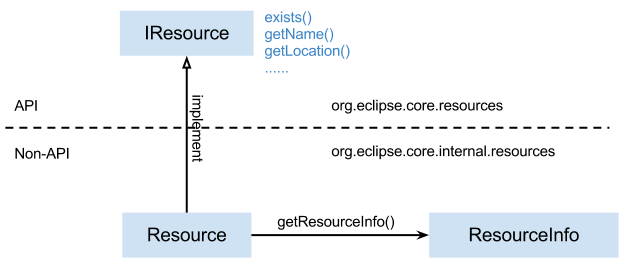Eclipse Design Patterns – Composite in Workspace
Composite in Workspace Composite pattern defines a tree hierarchy which lets clients treat objects in the hierarchy uniformly. In Eclipse Workspace, IWorkspace is the root interface and it is a Composite of IContainers and IFiles. Here is the interface hierarchy diagram. Code Example Here is an example to show how to get projects under Workspace. … Read more
